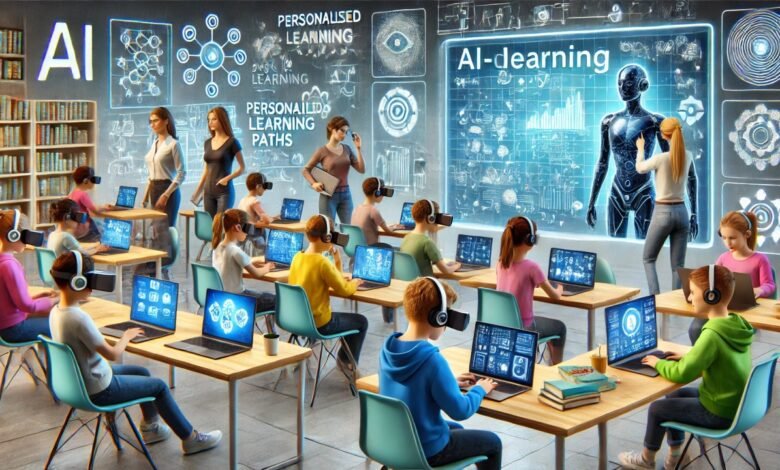From Classroom to Career: How to Prepare for the Professional World
From Classroom to Career: Learn essential strategies to transition smoothly into the professional world and achieve career success.

The transition from classroom to career is a significant milestone that requires careful planning and preparation. As students move beyond academic environments, they must adapt to the expectations of the professional world. Navigating this transition successfully involves building the right skills, gaining practical experience, and adopting a professional mindset. It’s about turning theoretical knowledge into practical applications that resonate in real-world scenarios.
From classroom to career, students can enhance their readiness by mastering workplace etiquette, developing a strong network, and honing soft skills. This guide explores the essential steps to prepare for the professional world, providing actionable insights to help students bridge the gap between academia and industry. Let’s delve into strategies that will empower you to launch your career confidently.
Read More: How to Prepare for the Professional World
Understanding the Transition from Classroom to Career
The journey from classroom to career involves adapting to new challenges, environments, and expectations in the professional world.
Students must recognize the key differences between academic and professional settings. While classrooms emphasize learning and theoretical knowledge, workplaces prioritize results, collaboration, and practical problem-solving. Adapting to this shift requires a proactive approach to learning workplace norms, understanding organizational goals, and aligning personal skills with industry demands.
By embracing this transition, students can build the confidence and adaptability needed to thrive in their chosen careers.
Setting Clear Career Goals Early
From classroom to career, defining clear goals is a critical first step toward professional success.
Identifying long-term and short-term objectives helps students align their academic choices with their desired career paths. Whether it’s gaining specific certifications or excelling in internships, goal-setting provides a roadmap to success. It also allows students to measure progress and adjust strategies when necessary, ensuring they remain focused on achieving their professional aspirations.
Building a Professional Network During School
Networking is an essential component of moving from classroom to career, as it opens doors to new opportunities and mentorships.
Students can start building their professional network by attending career fairs, joining student organizations, and connecting with professors or alumni. Engaging with industry professionals on platforms like LinkedIn helps establish valuable relationships that can lead to internships, job offers, and career advice. Networking fosters connections that can accelerate career growth.
Gaining Practical Experience Through Internships
Internships bridge the gap from classroom to career by providing hands-on experience in real-world settings.
Participating in internships allows students to apply their academic knowledge, develop industry-specific skills, and gain insights into workplace dynamics. Internships also enhance resumes and help students stand out in the job market, demonstrating their readiness for professional roles.
Choosing internships aligned with career goals ensures meaningful experiences that contribute to long-term success.
Mastering Time Management and Organization Skills
Effective time management is a vital skill for transitioning from classroom to career, enabling students to handle multiple responsibilities.
Balancing academic commitments, internships, and personal growth requires planning and prioritization. Students can use tools like calendars, planners, and productivity apps to stay organized and meet deadlines. Developing strong time management habits ensures they can handle the demands of a professional environment seamlessly.
Developing Strong Communication Skills
Communication is a cornerstone of success when moving from classroom to career, as it facilitates collaboration and builds relationships.
Students must master verbal, written, and nonverbal communication to convey ideas effectively. Whether it’s presenting in meetings or drafting professional emails, clear communication ensures mutual understanding and fosters positive impressions in the workplace.
Emphasizing Soft Skills Alongside Technical Expertise
From classroom to career, soft skills like teamwork, adaptability, and problem-solving are as important as technical knowledge.
Employers value individuals who can collaborate with diverse teams, handle challenges gracefully, and think critically. Developing these skills during academic years prepares students for the interpersonal dynamics of professional life, ensuring they contribute effectively to organizational success.
Crafting an Impressive Resume and Cover Letter
A well-crafted resume and cover letter are essential tools for transitioning from classroom to career.
Students should highlight academic achievements, internships, extracurricular activities, and relevant skills to showcase their potential. Customizing these documents for each application demonstrates professionalism and a clear understanding of the role, increasing the likelihood of landing interviews.
Understanding Workplace Etiquette and Professionalism
Learning workplace etiquette is crucial for a smooth transition from classroom to career, as it helps students adapt to professional norms.
This includes dressing appropriately, maintaining punctuality, and respecting colleagues. Professionalism fosters positive relationships and builds a strong reputation, setting the stage for career advancement.
Leveraging Career Services and Mentorship Programs
From classroom to career, leveraging resources like career services and mentorship programs provides valuable guidance and support.
Career centers offer services such as resume reviews, mock interviews, and job placement assistance. Mentorship programs connect students with experienced professionals who provide insights, advice, and encouragement throughout their career journey.
Developing Critical Thinking and Problem-Solving Abilities
Critical thinking is a key skill for navigating challenges when moving from classroom to career.
Students must learn to analyze situations, evaluate options, and implement solutions effectively. Engaging in group projects, case studies, and real-world simulations during academic years sharpens these abilities, preparing students for complex workplace scenarios.
Preparing for Job Interviews with Confidence
From classroom to career, job interviews are a pivotal step in showcasing skills and potential.
Students should research the company, practice common interview questions, and prepare examples of past achievements. Demonstrating confidence, enthusiasm, and a genuine interest in the role leaves a lasting impression on employers.
Building Digital Literacy for Modern Workplaces
Digital literacy is a critical skill for students transitioning from classroom to career, as most industries rely on technology.
Proficiency in tools like Microsoft Office, project management software, and industry-specific platforms enhances employability. Staying updated on technological trends ensures students remain competitive in a digital-first world.
Cultivating a Growth Mindset for Career Success
A growth mindset is essential for adapting to challenges and opportunities during the transition from classroom to career.
Viewing setbacks as learning experiences fosters resilience and continuous improvement. This mindset enables students to embrace new roles confidently, build skills, and achieve long-term career goals.
Exploring Freelancing and Gig Opportunities
Freelancing offers a unique way to gain experience and build a portfolio when transitioning from classroom to career.
Platforms like Upwork and Fiverr allow students to showcase their skills and earn income. Freelancing enhances time management, self-discipline, and problem-solving, making it a valuable addition to traditional career paths.
Managing Stress During the Transition
From classroom to career, managing stress is vital for maintaining focus and motivation.
Balancing job searches, interviews, and professional development can be overwhelming. Techniques like mindfulness, exercise, and time management help students stay grounded and navigate this period effectively.
Understanding Diversity and Inclusion in the Workplace
Diversity and inclusion are integral to professional success when moving from classroom to career.
Students must learn to work respectfully with colleagues from diverse backgrounds, fostering collaboration and innovation. Understanding the value of inclusivity ensures they contribute positively to workplace culture.
Continuing Education and Skill Development
From classroom to career, continuous learning is essential for staying competitive and adaptable.
Pursuing certifications, attending workshops, or enrolling in online courses helps students acquire new skills and advance in their careers. Lifelong learning keeps professionals relevant in evolving industries.
Evaluating Job Offers and Negotiating Terms
Evaluating job offers is a critical step in transitioning from classroom to career, ensuring students make informed decisions.
Consider factors like salary, benefits, work-life balance, and growth opportunities. Negotiating terms professionally demonstrates confidence and ensures alignment with personal and professional goals.
Setting Long-Term Career Goals for Success
From classroom to career, setting long-term goals provides direction and motivation for sustained success.
Students should envision their desired career path, identify milestones, and create actionable plans. Regularly reassessing and adjusting these goals ensures continued growth and fulfillment.
Read More: How to Prepare for the Professional World
Conclusion
Transitioning from classroom to career is a transformative journey that requires preparation, adaptability, and determination. By developing essential skills, gaining practical experience, and leveraging available resources, students can navigate this phase with confidence and ease. A proactive approach to networking, goal-setting, and continuous learning ensures a smooth transition and paves the way for professional success.
Embracing this journey from classroom to career not only equips students with the tools to excel but also fosters personal growth and resilience. By aligning academic knowledge with workplace demands, students can achieve their aspirations and thrive in their chosen fields.
FAQs
1. What is the key to transitioning from classroom to career?
Developing skills, gaining practical experience, and adapting to workplace expectations are crucial for a smooth transition.
2. How can students build professional networks?
Attending career fairs, connecting with alumni, and leveraging LinkedIn are effective ways to expand professional networks.
3. Why are internships important in the classroom-to-career transition?
Internships provide hands-on experience, industry exposure, and opportunities to apply academic knowledge in real-world settings.
4. How can students prepare for job interviews?
Researching the company, practicing common questions, and demonstrating enthusiasm and confidence are essential for interview success.
5. Why is continuous learning important for career growth?
Lifelong learning helps professionals stay competitive, adapt to industry changes, and advance in their careers.







